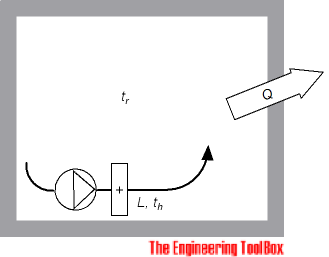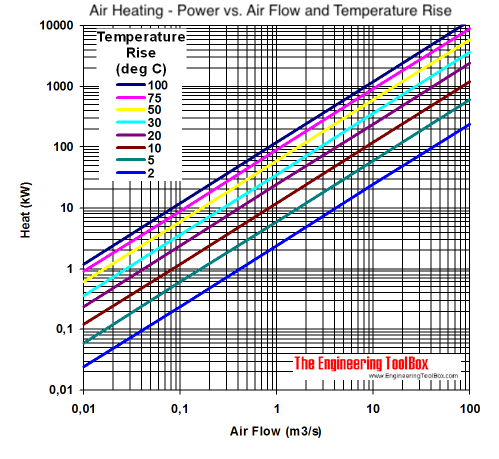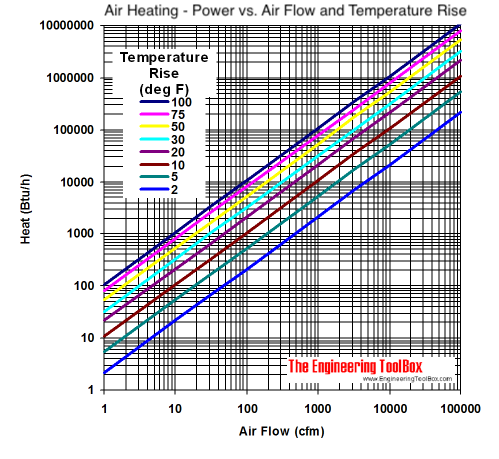Air Heating Systems
Air heating buildings - heat supply vs. air flow and temperature.
Air heating systems may be cost effective if they can be made simple or if they can be combined with a ventilation system. But - be aware that due to the low specific heat of air the use of air for heating purposes is very limited. Larger heat loads requires large volumes of air resulting in huge oversized ducts and fans. Transport of huge volumes of air requires a lot of energy.
Required Air Volume in an Air Heating System

Required air flow rate in an air heating system can be calculated as
L = Q / (cp ρ (th - tr )) (1)
where
L = air flow rate (m3/s)
Q = heat loss covered by the air heating system (kW)
cp = specific heat air - 1.005 (kJ/kg oC)
ρ = density of air - 1.2 (kg/m3)
th = heating air temperature (oC)
tr = room temperature (oC)
As a rule of thumb the air heating supply temperature should be in the range 40-50 oC. The air flow should be in the range 1-3 times the room volume.
Equation (1) expressed in imperial units:
L = Q / (1.08 (th - tr )) (2)
where
Q = heat (btu/hr)
L = air volume (cfm)
th = heating air temperature (oF)
tr = room temperature (oF)
Online Air Heating Calculator
Air Heating - Temperature Rise Diagram
The diagrams below are calculated from the equations above and can be used to estimate heat required to rise temperature in air flows.
SI units - kW, m3/s and oC

Imperial units - Btu/h, cfm and oF

- 1 m3/s = 3,600 m3/h = 35.32 ft3/s = 2,118.9 ft3/min (cfm)
- 1 kW (kJ/s) = 859.9 kcal/h = 3,413 Btu/h
- T (oC) = 5/9 (T (oF) - 32)
Example - Heating a single room with air
A building with a large room with a heat loss 20 kW is heated with air with a maximum temperature 50 oC. The room temperature is 20 oC. The required air flow rate can be calculated as
L = (20 kW) / ((1.005 kJ/kg oC) (1.2 kg/m3) ((50 oC) - (20 oC)))
= 0.55 m3/s
Required Air Flow from an Electric Furnace - Imperial Units
Required air flow from an electric furnace can be expressed in Imperial units as
L cfm = P w 3.42 / 1.08 dt (3)
where
L cfm = required air flow (cfm)
P w = electric power (watts)
dt = temperature difference ( o F)



